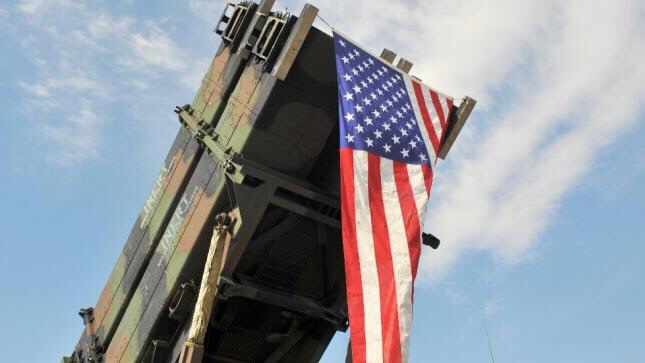 Pentagon budget seeks billions for modernizing nuclear arsenal, missile defense
Pentagon budget seeks billions for modernizing nuclear arsenal, missile defenseFebruary 12, 2018 - 02:37 PM EST
Pentagon budget seeks billions for modernizing nuclear arsenal, missile defense
By Rebecca Kheel
The Trump administration is requesting $24 billion for nuclear deterrence and $12.9 billion for missile defense in fiscal 2019.
The requests, part of the Pentagon’s total $686 billion budget proposal released Monday, come on the heels of the administration’s Nuclear Posture Review and ahead of the release of the Ballistic Missile Defense Review.
“Modernizing the nation’s nuclear delivery systems is the department’s number one priority, and these programs are fully funded in the [fiscal] 2019 budget,” the Pentagon’s budget proposal reads.
President Trump has often spoken about modernizing and bulking up the U.S. nuclear arsenal, saying in his State of the Union last month that it needs to be made “so strong and so powerful that it will deter any acts of aggression by any other nation.”
The Nuclear Posture Review, released last month, reaffirmed support for plans started by the Obama administration to modernize all three legs of the triad to deter competitors Russia and China. The triad refers to the ability to deliver nuclear weapons by land, sea and air.
To that end, the $24 billion for nuclear deterrence includes modernization for all three legs of the triad, as well as for nuclear command, control and communications systems, according to the White House budget document.
The modernization includes $2.3 billion for the future B-21 bomber, $3.7 billion for the future Columbia-class submarine, $600 million for the future Long Range Stand Off cruise missile and $300 million for the future Ground Based Strategic Deterrent intercontinental ballistic missile.
Meanwhile, the $12.9 billion for missile defense has an eye on protecting against North Korea, which has made considerable progress on achieving a nuclear-armed missile capable of striking the United States.
“The budget increases the capability and capacity of the United States to detect, defeat, and defend against any North Korean use of ballistic missiles against the United States, its deployed forces, allies, and partners,” the White House budget proposal says.
Of the total for missile defense, $9.9 billion would go to the Missile Defense Agency.
That would buy 43 Aegis interceptors for $1.7 billion, four Ground-based Midcourse Defense (GMD) interceptors and 10 silos for $2.1 billion, 82 Terminal High Altitude Area Defense interceptors for $1.1 billion and 240 Patriot Advanced Capability Missile Segment Enhancement interceptors for $1.1 billion.
The Pentagon also says the budget would allow it to develop an additional missile field in Alaska for the GMD and puts it on track to have a total of 64 deployed and operational GMD interceptors by 2023, 20 more than it has now.
The GMD is the system in Alaska and California that would defend against a long-range missile attack such as from North Korea. The system's most recent test last year was successful, though critics have said it is too costly and has a spotty testing record.
No comments:
Post a Comment